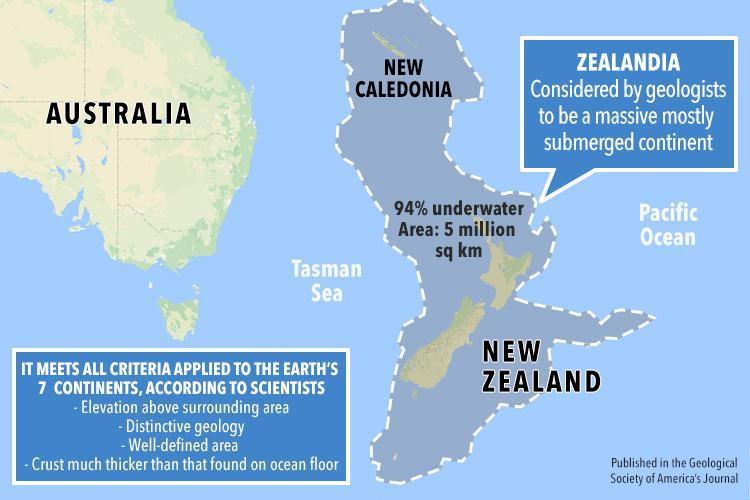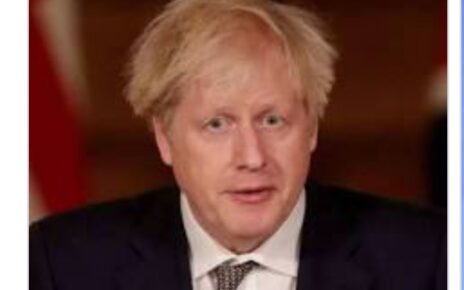A newfound chunk of ancient supercontinent concealed beneath New Zealand’s eastern shores could help decipher eighth continent– Zealandia’s complex past.
The discovery of a new continent in the South Pacific was announced in 2017. Zealandia is half the size of Europe and mostly underwater. Only 6% is above the waves, which is why no-one found it earlier. It only substantially breaks the ocean surface at the islands of New Zealand, hence the name. Zealandia stretched five million square kilometres (1.9 million square miles) and is 94% underwater, according to research published in the Geological Society of America’s Journal, GSA Today.
It is believed to have broken away from Gondwana – the immense land mass that once took in Australia – before sinking between 60million and 85m years ago.
In the summer of 2018, geologist Rose Turnbull (a researcher based in New Zealand) was in California, sorting through grains of fine sand. She was looking at tiny crystals of zircon to get a better understanding of Zealandia, known as Te Riu-a-Maui in Maori.
The crystals hailed from rocks that were collected from the islands of New Zealand, which are among the few bits of Zealandia’s nearly two million square miles that poke above the sea. Only recently recognized by scientists, Zealandia is the most submerged, thinnest, and youngest continent yet found.
Turnbull, who works for the research and consulting firm GNS Science in New Zealand, and her colleagues were curious about the processes that shaped the unique landmass.
What they found surprised them. Concealed beneath the eastern side of New Zealand’s South and Stewart Islands lingers a chunk of a billion-year-old supercontinent. The discovery suggests that Zealandia may not be as young as once believed, and thus be a stronger candidate to be accepted as a continent.
“Continents are sort of like icebergs,” said study author Keith Klepeis, a structural geologist at the University of Vermont, adding, “What you see at the surface is not really the full extent of the beast.”
There is a catch, however. Most continents are known to have a core of rock called a craton, “a sort of geologic nucleus at least a billion years old that acts like a stable base upon which continents build,” wrote National Geographic. Yet with Zealandia, the oldest continental crust was dated back to roughly 500 million years ago – pretty young in terms of geology. That is, where is Zealandia’s craton, if it is supposed to be a continent?
So this is why the discovery of the newfound fragment of ancient rock is so significant. It “ticks the final box,” Turnbull says. “We are sitting on a continent.”
Another one of the study’s authors, Joshua Schwartz, a geologist specialising in granites at California State University, Northridge, says the work is also part of the larger puzzle of how Zealandia came to be.
“That layer on top of the Earth that we call the crust, that thin layer is where all the action for life happens,” he says. The continental crust is where we live, grow crops, draw water, mine minerals, and more. “Essentially, all of our life is built on crust.”
Until now, Zealandia’s oldest crust seemed to have taken shape starting about 500 million years ago, when the continent was sitting at the edge of the supercontinent Gondwana. Zealandia also has hints of older rocks, including “bits of the mantle as old as 2.7 billion years” but more ancient crust has been hard to find.
The new study focuses on 169 samples from New Zealand’s South and Stewart Islands. Some of these came from samples collected by Turnbull and her colleagues while others came from New Zealand’s rock catalog, so the collection is pretty exhaustive.




